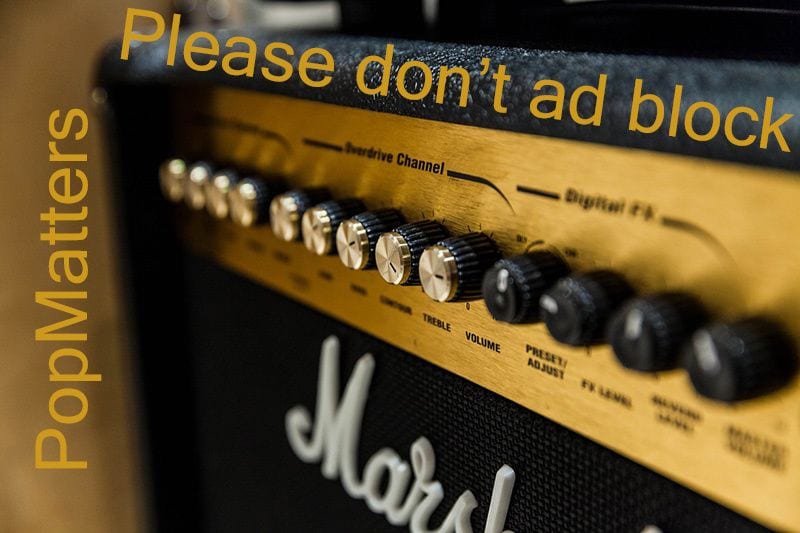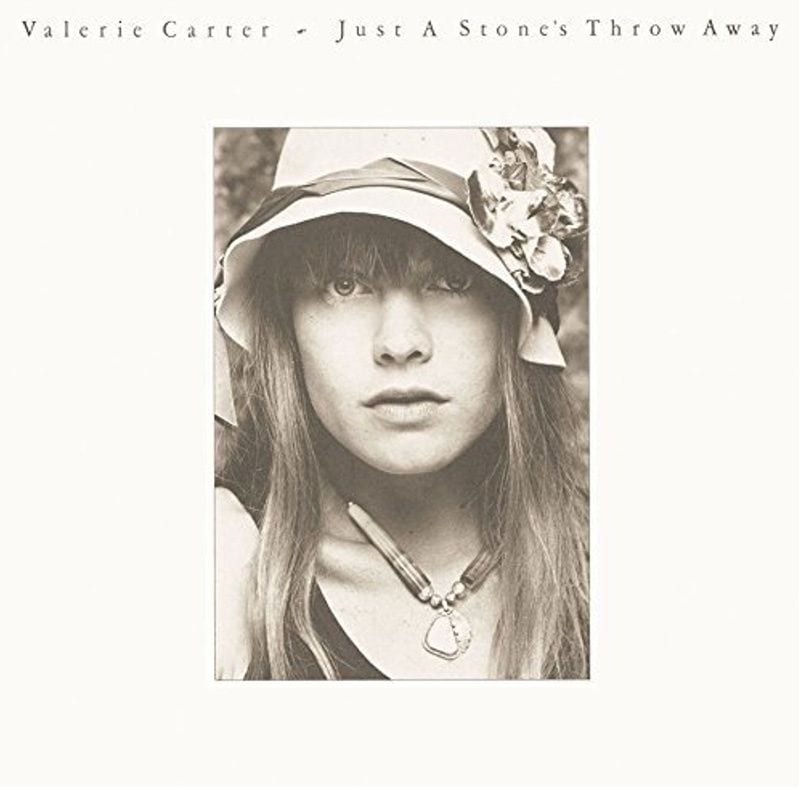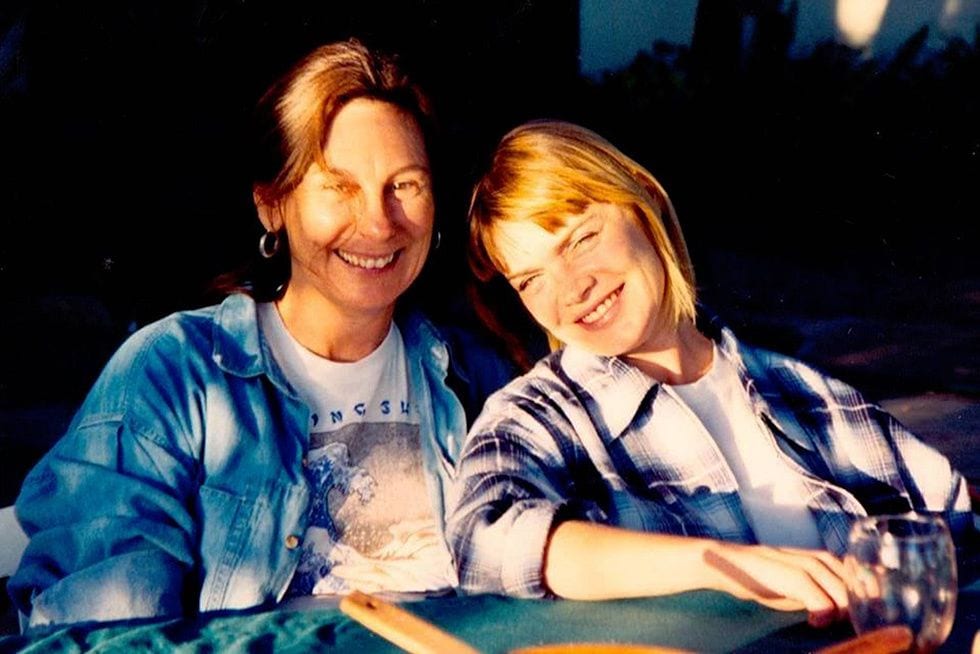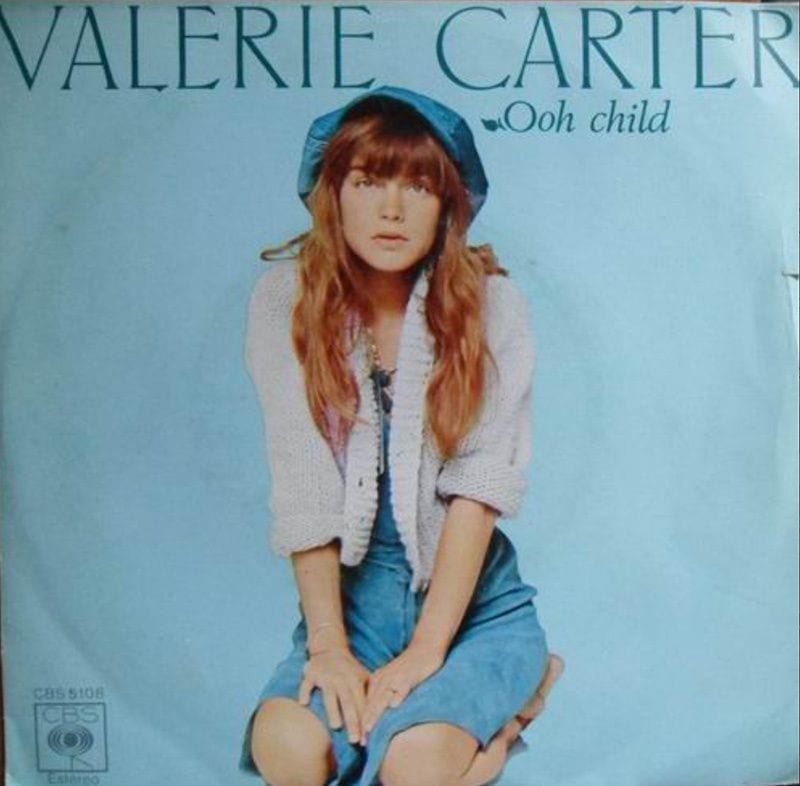Although she sometimes balked at being the center of attention, the late Valerie Carter had a singing voice destined to thrust her into the glare of the spotlight, whether or not she sought it. Although other backing-vocalist powerhouses have, in recent years, garnered more attention (most notably via the 2013 documentary, 20 Feet From Stardom by which Carter was, inexplicably, ignored), Carter was the equal of legends like Merry Clayton when it came to demand for her talent. Pick up an American (and, sometimes, French or British) album made in the 1970s, 1980s or 1990s, and there’s a significant chance you’ll find her in the credits. Her voice had a gliding, glistening, unforced beauty. And thanks to a combination of her talent and the fact that she very much looked the part, with the face of a photographic model, there was more than one attempt to fashion her into a solo star.
There are peerless backing vocalists whose brilliant singing is, nevertheless, too expertly blank to carry an album on its own. That very blankness, such an asset as a backing singer, becomes a liability solo. Hence, they often stay where they shine most; as support for other artists. Carter, however, had the good fortune to possess a voice with a distinctive character; sweet but never saccharine, and soulful by any estimation. Her premature death in 2017 was a grave loss to music. Now, however, the first in an intended two-part series, The Lost Tapes, is here. It’s a collection of demos and outtakes compiled and produced by one of Carter’s closest friends, musician/songwriter/producer, Kathy Kurasch.
Kurasch, like her departed friend, has always worked in music. She and Carter first met in the early ’70s when the latter was in the A&M-signed folk-rock trio, Howdy Moon. “My dad was the studio violinist and played on Val’s first three records. I went to a string date and met her. She was just about the kindest human being I had ever met,” says Kurasch. “She was so adorable and so incredibly funny. We just hit it off. I was only 14, so I didn’t see her again until I was 19 and happened to be working at the Record Plant in LA. Val came looking for her car, and we hit it off once again and remained friends for life.” Generosity of spirit was, says Kurasch, perhaps the most pronounced of Carter’s characteristics. “The whole Carter family would give you the shirts off their backs, and I think they take great pride in that.”
Kurasch grew up around music. “My father was very lucky, working during the era of the session musician. A typical day for him would be 10:00 am-1:00 pm at Gold Star with the Beach Boys, 2:00-5:00 pm at RCA with Elvis, and 7:00-10:00 pm at MoWest with the Supremes. On the weekends he did The Sonny & Cher Show or The Glen Campbell Goodtime Hour and in the summers he would work at the Greek with Neil Diamond and the Carpenters. There was no shortage of work, and as his kid, I couldn’t have asked for a more exciting upbringing. I loved it and never had any doubt it was what I wanted to do. I could just never make up my mind between musician, composer, engineer or producer. I just love all of it, so I do a bit of each and have managed to make a living, somehow, doing so.” If you ask Kurasch which project has meant the most to her, there’s no hesitation; it is this tribute to her friend’s underrated, under-celebrated, one-in-a-million singing voices. “What an honor! If someone had told me at 14 that I’d be producing Val’s final albums, I wouldn’t have believed it. She was someone I always looked up to and still do. I believe she’s up there smiling and laughing with me every day.”
Perhaps the most surprising revelation Kurasch shares with me about Carter is that her voice was an untrained gift. “Val never had a vocal coach or ever really practiced for that matter. She would warm up before a show, but that was about it. I had never heard such a big voice come out of such a small person. Everything from her sound to her pitch was perfect. I considered her to be one of the greatest voices of all time. I still think that.”
Carter’s recording career was one of stops and starts. Although Howdy Moon’s sole album, issued in 1974, wasn’t a sales hit, its songs did spawn some success for her as a writer. Her “Cook With Honey” was a Top 40 hit for Judy Collins in 1973. The Howdy Moon version is an entirely different arrangement. While Collins goes for a folk approach that turns it into a children’s song, Carter’s treatment is yearning and slow, with a cool, sensual groove. It’s a night and day difference. But before the Howdy Moon story could go any further, Carter went solo. “I don’t know if there were any concrete plans for a second Howdy Moon album,” says Kurasch. “Val was just offered a solo deal on Columbia and went for it. She wasn’t happy about leaving the band. She wanted the label to sign them all, not just her alone. And she didn’t want to move to LA. But they only wanted her.”
Throughout her working life, Carter would be a collaborative songwriter, but not someone who recorded completely self-written albums. Her collections tended to mix a few of her own songs with outside material. “Val didn’t write a whole lot,” Kurasch concurs, “although she wrote more than most people realize, with cuts on albums by Earth, Wind & Fire, Black Rose (Cher’s band with Les Dudek), the Brothers Johnson, Tom Jans and, of course, Jackson Browne, to name a few. She didn’t have the kind of ego that wanted to make an album full of just her songs. She just cared if the song was good and not who wrote it”.
In the same decade that she sang on albums by James Taylor, Tom Jans, Tom Snow, Nicolette Larson, Christopher Cross, Randy Newman, Eddie Money, Rod Stewart, and Little Feat, Carter made two albums for Columbia. The first, Just a Stone’s Throw Away (produced by Lowell George, Maurice White and George Massenburg in 1977), has become something of a cult favorite, despite not breaking through on a massive scale at the time of its release. It’s an effective exposition of all the sides of her talent. There’s a bravura display of bird-like swoops and sighs on her famous interpretation of the Five Stairsteps’ “Ooh Child”. There are rootsy, folk-rock numbers including “Face of Appalachia” and “Cowboy Angel” (the latter written by Carter with Lowell George).
Light, poppy moments are sprinkled throughout (“So, So Happy”), but it’s the more intense songs, including “Heartache” (with Linda Ronstadt) that really cut through. “City Lights”, featuring and partly written by Maurice White, casts Carter as a disco funkster to impressive effect. And on the haunting, moody album closer, “Back to Blue Some More”, it’s as if she’s stepped out of a melancholy Edward Hopper painting. It’s a remarkably solid, enjoyable debut. Among the starry cast are Deniece Williams, Tom Jans, Lowell George, Jackson Browne, Charles Rainey, David Campbell, and John Sebastian.
“Val loved singing and recording,” says Kurasch. “But she didn’t love being the ‘solo artist’. She found that out during this time.” As uncomfortable as Carter felt being the focal point, she nevertheless pressed on, recording a follow-up, Wild Child, in 1978. Her name appeared in the songwriting credits of roughly half the tracks. To some, it’s the poor relation, with its disco-pop compromises, its studio wizards (James Newton Howard), its ultra-slick session players and commercial sheen. I’ve always liked it.
Whatever the disparities in quality from one song to the next, it’s an album that leaves a powerful and distinctive mood in its wake. It’s a seamless and cohesive work, with a memorable front cover portrait, emphasizing Carter’s movie star looks. It closes with the title track, written by David Batteau – an eerie, midnight ballad, with a fairly unsentimental narrative about finding love with the person everyone is advising you against. Carter’s vocal is unrestrained and yet utterly controlled and compelling. It’s up there with ‘Ooh Child’ as an example of her artistry at its most concentrated and pure. (Side note: if you’re taken with this track, then I’d urge you to seek out David Batteau’s 1975 A&M album, Happy in Hollywood, and the 1973 Columbia album he made with his brother, Robin, under the group name Batteaux, which has recently been reissued by Be With Records.)
Wild Child marked the end of Carter’s time with Columbia. Busy with backing vocals and some songwriting here and there in the 1980s, she wouldn’t re-emerge as a solo artist until 1996, when she cut The Way It Is for the Japanese Pony Canyon label. It was a tremendous return. Sometimes, Japan-only albums by western artists slip by quietly and aren’t considered a part of their proper body of work. But just as often, they’re every bit as good as albums funded by American labels.
“She loved Japan and Japan loved her,” says Kurasch. “I don’t know how she became so popular there, but she did some shows and signed a few deals. She loved how polite they were, how gentle and kind they were. She was a timid little thing, and the record business can be such a harsh place – I think that’s what put Val off the most. So a little kindness went a long way with her and Japan showed her that. I remember the day she decided to make another album finally. It was a huge decision and something she didn’t take lightly. She had really given it a lot of thought. I think age had something to do with it as well. She was about to turn 43, and I think that frightened her a bit. She always loved expressing herself as a lead vocalist. She just didn’t love all the responsibility that came with that. I think she was really making an attempt this time to grow up, get back in the ring and give it all she could.”
Carter’s friends rallied to make contributions to the recording, including Phoebe Snow, who guested prominently on a hidden cut (remember those quirks of the CD era?), a cover of Earth, Wind & Fire’s “That’s the Way of the World”. In the final two decades of her life, Carter completed a few more projects, including another Japan-funded collection, Find a River (1998) and took part in several tours. Thanks to The Lost Tapes, some of the gaps between her albums are being filled in; for example, the collection finally lets us in on some of her 1980s activities.
“Jan, Val’s sister, had been saving these tapes for years. Val was always very humble and never even mentioned that she had rough mixtapes of her work with everyone from Prince to Cher. Half the time, she never even mentioned working with them. But Jan knew. And she knew to save the tapes. She had them stored all over the Carter home, from laundry room to attic. I flew back after Val passed and went through what I could. We gave boxes to a trusted friend to go through. Jan went through some, and we flew home the rest for me to go through. I then went through the tapes in my home and in storage and found more. Then, after asking around, we discovered there were tapes in Jackson Browne’s tape vault and Liz George’s home. Larry John McNally had DATs, and Tom Snow, Will Jennings, Steve Tyrell, too.” Kurasch had a phenomenal amount of work ahead of her; to make sense of everything, organize tape restoration where necessary, plan a sprinkling of overdubs and then create an album. “There were over 500 tapes to listen to.”
Thanks to Kurasch’s diligent whittling down of that mountain of tracks, an album has emerged that reveals what Carter was up to, not only during her Columbia years but also beyond. “Val and I lived together for much of the 1980s, and we were always throwing down tracks and trying different things. We had a home studio, and we had a lot of fun. Maybe too much fun! We had a lot of unfinished tracks. We maybe should have buckled down more and really worked, but we just loved doing what we did.”
Included is one track from Carter’s long-rumored songwriting collaborations with Prince, “I Got Over It”. Their paths crossed during Prince’s early years with Warner Bros, before world stardom had entirely consumed him. “Val and Prince were both managed by Bob Cavallo,” says Kurasch. “They met and became friends. Prince was underage, and Val felt a bit responsible for him. She was the youngest in her family, so I think she felt a little bit like a big sister to him, strange as that may seem.”
Prince was brought in as a potential producer for a Carter album project (Kurasch thinks it might have been Wild Child), but clashed with the powers that were, and did not last. “I thought “I Got Over It” was a hit the second I heard it and told Val. There are two versions; the one Val did and the one Prince did. Neither of them ever did anything with the song.” Kurasch says that there are tapes of other songs that the pair worked on. “They’re much more Prince-sounding. I think they were done at a later date. “I Got Over It” is much earlier and has a more timeless Val sound to it. I think another artist should cover it. They could have a real hit with it. Our version is just a demo. But everyone seems to love it. I put together a little video for it that’s getting lots of views.”
Over the years, persistent rumors have circulated attributing the stop-go nature of Carter’s recording career to drug addiction and, in 2009, she had a particularly public run-in with the authorities when she was arrested for possession. She completed a court-ordered rehab, with James Taylor attending her graduation. But Kurasch says the whole ‘career-derailed-by-addiction’, tabloid way of seeing Carter’s life is wrong. “Val struggled with addition her entire adult life. She, just let’s say, was in more than one rehab. But what people do not understand is that whether she was an addict or not, she still would not have chosen the life of a ‘star’. She really was too shy and too humble to ever want to be the one in the spotlight. It wasn’t because of being a drug addict. It was a choice – a choice she made pretty early on.”
Kurasch has meticulously structured The Lost Tapes so that it transcends its status as an odds-and-ends collection and works as an album. One way she’s done it is by bookending the collection with excerpts of an alternative version of “The Blue Side”, a song that originally appeared on Wild Child. It opens The Lost Tapes in a capella form and then closes it in accompanied form. “The first time I heard ‘The Blue Side’, I thought it was a perfect song choice for Val because of the lyrics. It so accurately described her, I felt. There is an innocence to it. I thought soloing her voice and bookending it might make the album a little more intimate. I wanted the album to reflect Val in the closest way I could, and to me, that meant keeping it on a very intimate level with more of a homemade feel. That’s why I put songs on like “Labor of Love”, where it’s just her and a friend at the piano. That’s who Val was. A friend at the piano.”
Sometimes, the provenance of a particular tape wasn’t possible to determine. “‘Be Here Now’ is a mystery song. It’s one of my favorites. We have no idea where it came from. I spent countless hours searching copyright databases and playing it for musician friends, looking for answers, to no avail. The cassette-only had songs Val wrote on it, so we’re confident she is a co-writer, and we’re hoping the other writer(s) will come forward. It was on one of the tapes that were in bad shape. I did what I could to restore it, added a high hat and a shaker to keep it moving in the verses, and then EQ’d it the best I could to clean it up.”
Another song from Carter’s Columbia years is “Heartache”, originally on Just a Stone’s Throw Away. The version on The Lost Tapes is just piano-accompanied, making the interaction between Carter and Linda Ronstadt more vivid than on the fully produced version. “It was on another mystery tape that was in Jackson’s [Jackson Browne] storage with no written notes. I am assuming it’s a sort of outtake or rough mix. I added a string quartet in the bridge with Robin Lorentz, a fabulous violinist, playing all the parts, but we ended up not using it only because I couldn’t get the sound I wanted in my studio and we didn’t have the budget to rent the mic I needed or to pay for studio time elsewhere. Recording violin isn’t easy. The mics I like to use cost about $20k, and the sound of the room is very important. But there’s a beautiful simplicity with just the two voices and piano, and in the end, it didn’t really need anything added.”
The album has emerged to an excellent reception, especially in Japan; no small feat for a production with a $5000 budget. It’s on a boutique label, Cowboy Angel Records, set up especially for its release. “Neither Jan nor I have any experience in owning an indie label, but it seemed the best way to go about doing this. The biggest challenge was the budget. But we made it. I just wore a lot of hats!”
Kurasch, already at work on The Lost Tapes Volume 2, is gratified to be boosting the posthumous reputation of her friend. “Some people will only remember Val for her addiction. There is nothing I can do about that. But how would I like her to be remembered? As the best little friend in the world, one of the funniest human beings on Earth, with truly the voice of an angel.”








